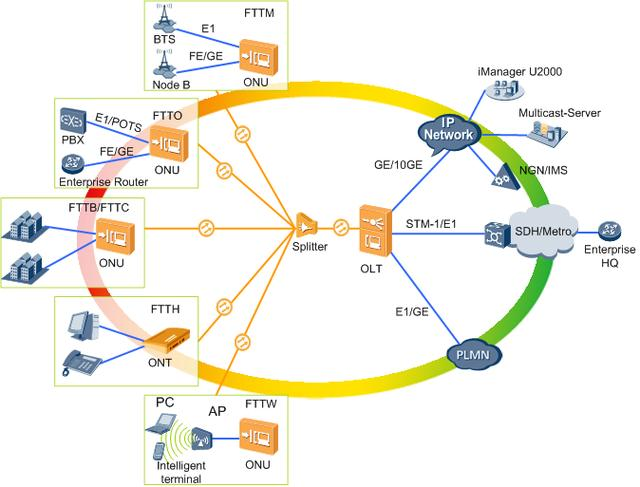The orchestration of OLT (Optical Line Terminal) and ONU (Optical Network Unit) optical modules in networking is fundamental to the efficient and reliable operation of fiber-optic communication systems. These components work in tandem to convert and transmit optical signals, enabling high-speed data transmission over long distances.
At the core of the network lies the OLT, which serves as the central hub for optical signals. It receives optical signals from the backbone network and converts them into electrical signals for further processing. The OLT also generates optical signals to be transmitted downstream to the ONUs. These signals carry the data that needs to be delivered to the end users.
The ONUs, on the other hand, are deployed at the customer premises, acting as the termination points for the optical fiber. When the ONU receives downstream optical signals from the OLT, it converts them back into electrical signals that can be utilized by the customer's devices. Similarly, upstream electrical signals generated by the customer's devices are converted by the ONU into optical signals and transmitted back to the OLT.
The conversion process between optical and electrical signals is facilitated by the optical modules within the OLT and ONU. These modules are precision-engineered components that contain lasers for signal transmission and photodetectors for signal reception. The lasers in the OLT emit optical signals, while the photodetectors in the ONU detect and convert incoming optical signals into electrical signals.
In a Passive Optical Network (PON) architecture, a single OLT can support multiple ONUs through a shared optical fiber. This is achieved by employing passive optical splitters that distribute the downstream optical signals from the OLT to multiple ONUs and aggregate the upstream optical signals from the ONUs back to the OLT. This shared architecture efficiently utilizes optical fiber resources, enabling cost-effective deployment of fiber-optic networks.

The working principle of OLT and ONU optical modules relies on the precision and reliability of their components. The lasers must emit stable and accurate optical signals, while the photodetectors must be sensitive enough to detect and convert these signals with minimal loss or distortion. The electronics within the modules also play a crucial role in signal processing and amplification, ensuring the integrity of the data transmitted over the network.
In summary, the orchestration of OLT and ONU optical modules in networking involves the conversion and transmission of optical signals, enabling efficient and reliable data transmission over fiber-optic networks. The precision and reliability of these modules are crucial to the overall performance of the network, ensuring seamless connectivity and high-speed internet access for end users.


